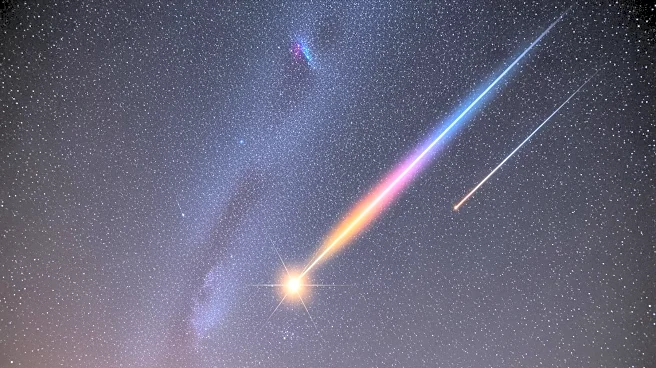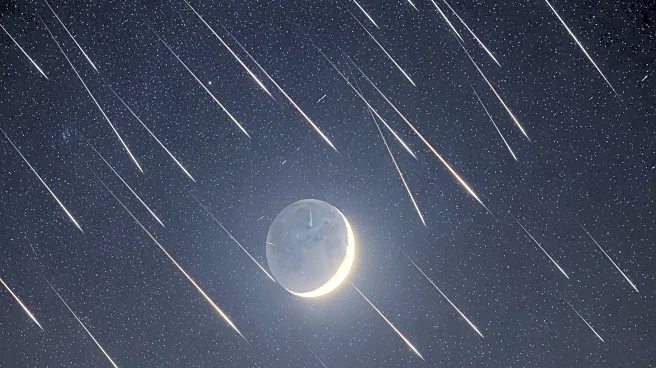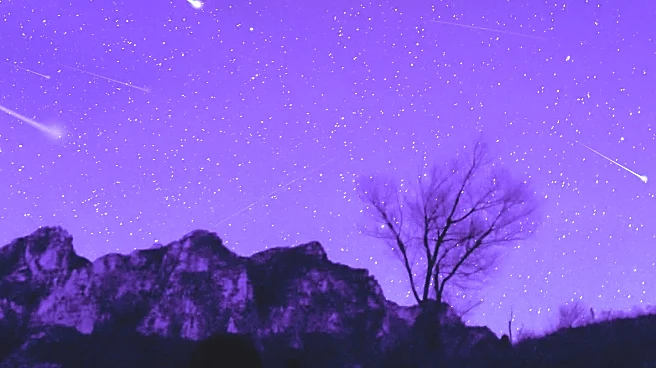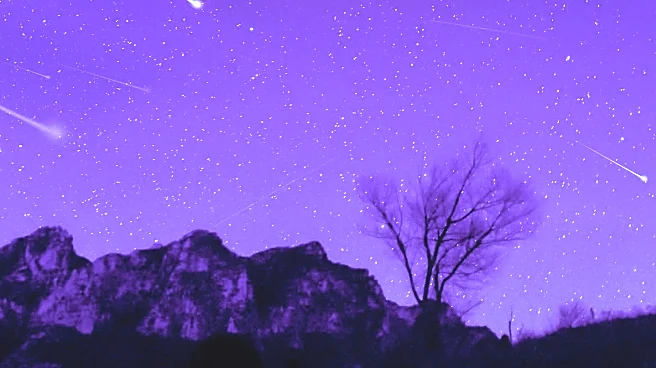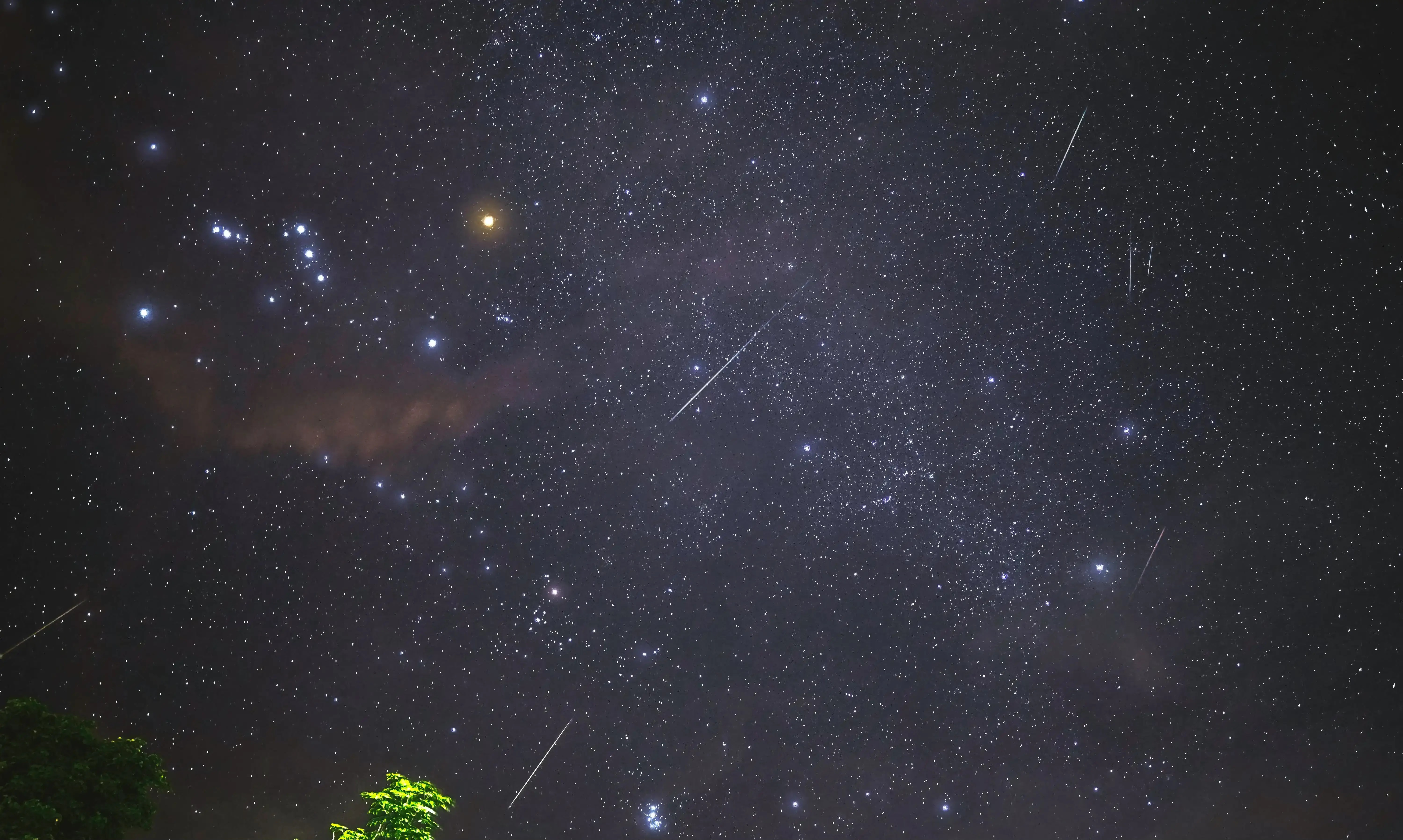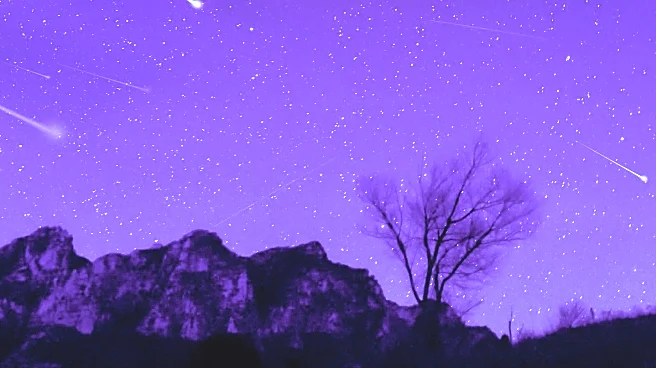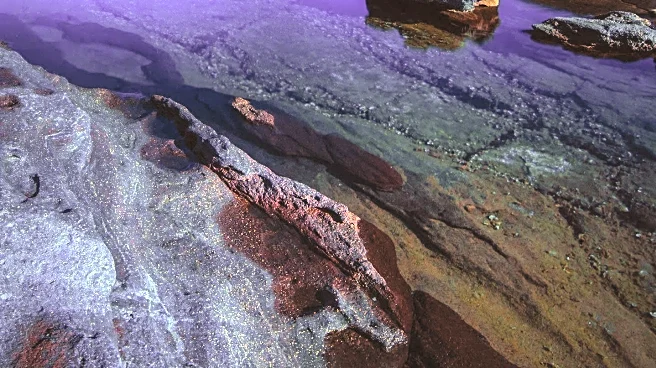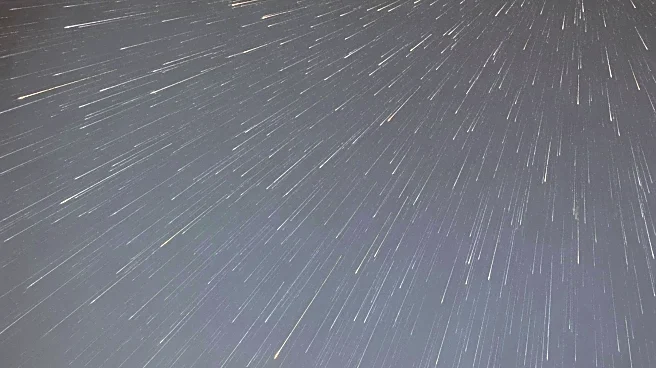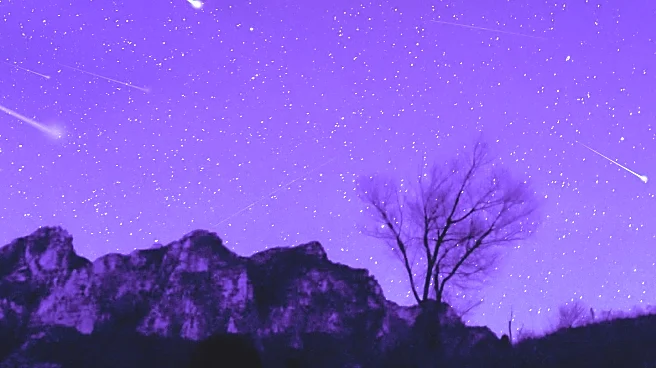What's Happening?
The Orionid meteor shower, associated with the remnants of Halley's comet, is currently active and will reach its peak viewing period between October 21 and 23. According to NASA, this annual celestial
event allows stargazers to witness meteors traveling at speeds of up to 148,000 mph. The American Meteor Society notes that the shower is active from October 2 to November 7, with optimal viewing times occurring in the early morning hours. Space.com advises observers to locate the constellation Orion and focus on the red star Betelgeuse, then choose a patch of sky 40 degrees away from the zenith for the best experience. The Orionids are part of a series of meteor showers visible throughout the year, including the Southern Taurids, Northern Taurids, Leonids, Geminids, and Ursids.
Why It's Important?
Meteor showers like the Orionids offer a unique opportunity for the public to engage with astronomy and appreciate the natural phenomena occurring in our solar system. These events can inspire interest in space science and education, potentially influencing future generations to pursue careers in STEM fields. Additionally, meteor showers provide valuable data for scientists studying the composition and behavior of cometary debris. The visibility of such events can also boost local tourism in areas known for clear skies and optimal viewing conditions, benefiting local economies. As public interest in space exploration grows, events like the Orionid meteor shower play a crucial role in fostering a connection between the public and the cosmos.
What's Next?
Following the Orionid meteor shower, several other meteor showers are expected to occur, including the Southern Taurids on November 4-5, Northern Taurids on November 11-12, Leonids on November 16-17, Geminids on December 13-14, and Ursids on December 21-22. These events provide additional opportunities for stargazing and scientific observation. Furthermore, two full supermoons, the Beaver Moon on November 5 and the Cold Moon on December 4, will also be visible, offering more chances for astronomical observation. As these events unfold, they may continue to attract public interest and participation in astronomy-related activities.


